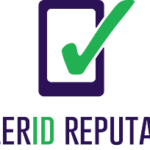Caller ID is a feature that displays the name and number of the person who is calling you, or the person you are calling. Caller ID is important for businesses, as it can help establish trust and credibility with your customers and prospects, increase your answer rates and conversions, and reduce your costs and complaints. However, caller ID can also be a source of trouble, if your business has a negative caller ID reputation.
A negative caller ID reputation means that your business’s name and number are not displayed correctly or consistently on the phones of your customers and prospects, or that they are associated with spam, fraud, or harassment. A negative caller ID reputation can have a serious impact on your business, such as:
- Lowering your answer rates and conversions, as people are more likely to ignore or reject calls from unknown, unfamiliar, or suspicious numbers.
- Damaging your brand image and reputation, as people are more likely to distrust or dislike your business if they receive unwanted, annoying, or fraudulent calls from your number.
- Increasing your costs and complaints, as you may have to make more calls to reach your customers and prospects, or deal with more disputes and legal issues.
A negative caller ID reputation can be caused by various factors, such as technical errors, database inaccuracies, spoofing attacks, or poor caller ID practices. Therefore, it is important to proactively manage your caller ID reputation, and take immediate and long-term actions to recover and maintain it. In this article, we will guide you through the steps to identify, resolve, and prevent caller ID reputation issues, and how to engage with your customers post-recovery.
Signs of a Damaged Caller ID Reputation
The first step to recover your caller ID reputation is to identify if you have a caller ID reputation issue. Some of the signs that indicate that your business has a damaged caller ID reputation are:
- You receive feedback from your customers and prospects that they do not recognize your name or number, or that they see a different or incorrect name or number when you call them.
- You notice a decline in your answer rates and conversions, or an increase in your call abandonment and rejection rates.
- You receive complaints or reports from your customers and prospects that they receive spam, fraud, or harassment calls from your number, or that your number is blocked or flagged by their phone service providers or apps.
- You receive notifications or warnings from your phone service providers or regulators that your number is suspected or confirmed to be involved in spam, fraud, or harassment activities, or that your number is subject to penalties or restrictions.
To monitor your caller ID reputation, you can use various tools and services, such as:
- Caller ID verification services, such as STIR/SHAKEN, which is a protocol that authenticates and validates caller ID information to prevent spoofing. You can check if your phone service provider supports STIR/SHAKEN, and if your calls are verified or not.
- Caller ID reputation services, such as [CallerName], [Truecaller], or [Hiya], which are apps or websites that collect and display caller ID information and ratings from users and databases. You can check how your name and number are displayed and rated by these services, and if they are marked as spam or fraud.
- Caller ID feedback services, which are apps or websites that allow you to collect and analyze feedback from your customers and prospects about your calls and caller ID. You can check how your customers and prospects perceive and respond to your calls and caller ID, and if they have any issues or complaints.

Immediate Actions to Take for Reputation Recovery
If you identify that your business has a caller ID reputation issue, you need to take immediate actions to stop the damage and start the recovery process. Some of the actions that you need to take are:
- Stop making calls from the affected number or numbers, until you resolve the issue. This can help prevent further damage to your reputation, and avoid more complaints or penalties.
- Contact your phone service provider and inform them about the issue. They may be able to help you fix the technical errors, update the database information, or protect your number from spoofing attacks. They may also be able to provide you with a new or temporary number, if needed.
- Contact the caller ID reputation services and request them to correct or remove the inaccurate or negative information about your name and number. You may need to provide proof of your identity and ownership of the number, and explain the cause and resolution of the issue.
- Contact the caller ID feedback services and request them to remove or modify the negative feedback or ratings about your name and number. You may need to provide proof of your identity and ownership of the number, and explain the cause and resolution of the issue.
- Contact the customers and prospects who have received or reported spam, fraud, or harassment calls from your number, and apologize and explain the situation. You may need to provide proof of your identity and ownership of the number, and assure them that the issue has been resolved and will not happen again.
Long-Term Strategies for Caller ID Reputation Management
After you have taken the immediate actions to recover your caller ID reputation, you need to implement long-term strategies to maintain and improve it. Some of the strategies that you need to follow are:
- Develop a consistent caller ID strategy that aligns with your business goals and customer expectations. You need to decide what name and number to display when you make calls, and how to customize them for different purposes, such as personal and business calls, or different types of customers or clients. You also need to ensure that your name and number are accurate, relevant, and professional, and that they reflect your brand identity and value proposition.
- Regularly monitor and update your caller ID information, and check for any errors or changes. You need to keep your caller ID information up to date and consistent across different platforms and databases, and avoid any discrepancies or conflicts. You also need to check for any technical issues or spoofing attacks that may affect your caller ID transmission or display, and fix them as soon as possible.
- Use reputable and reliable phone service providers and caller ID services that support and verify caller ID information. You need to choose phone service providers and caller ID services that have access to the name database of the phone network, that update the name database frequently, and that support name display for international calls. You also need to choose phone service providers and caller ID services that offer caller ID verification services, such as STIR/SHAKEN, which can help prevent spoofing and enhance your caller ID reputation.
Engaging with Customers Post-Recovery
The final step to recover your caller ID reputation is to engage with your customers and prospects post-recovery, and rebuild trust and loyalty with them. Some of the ways that you can engage with your customers and prospects post-recovery are:
- Communicate with your customers and prospects about your caller ID issue and resolution, and thank them for their patience and understanding. You can use various channels, such as email, text, or social media, to inform your customers and prospects about what happened, what you did to fix it, and what you are doing to prevent it from happening again. You can also use these channels to thank your customers and prospects for their patience and understanding, and to express your appreciation and gratitude for their continued support and business.
- Build transparency and trust with your customers and prospects through customer engagement. You can use various methods, such as surveys, feedback forms, testimonials, or reviews, to collect and display customer feedback and ratings about your calls and caller ID. You can also use various incentives, such as discounts, rewards, or referrals, to encourage and reward your customers and prospects for answering and engaging with your calls and caller ID. These methods can help you build transparency and trust with your customers and prospects and show them that you value their opinions and satisfaction.
Caller ID reputation is an ongoing and dynamic process that requires constant attention and management. By following the steps and strategies outlined in this article, you can recover and maintain your caller ID reputation, and enjoy the benefits of caller ID for your business. However, you also need to be vigilant and proactive, and monitor and update your caller ID information and practices regularly, and address and resolve any issues or challenges promptly. By doing so, you can ensure that your caller ID reputation is always positive and consistent, and that your customers and prospects always trust and respond to your calls.



